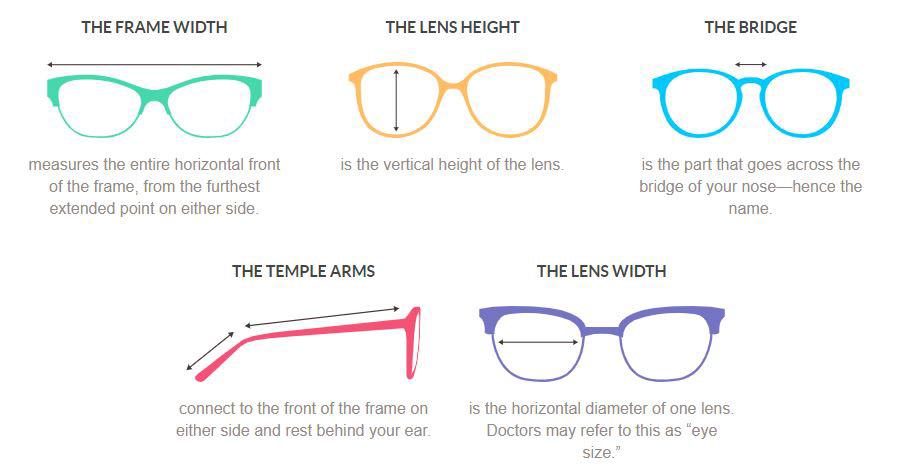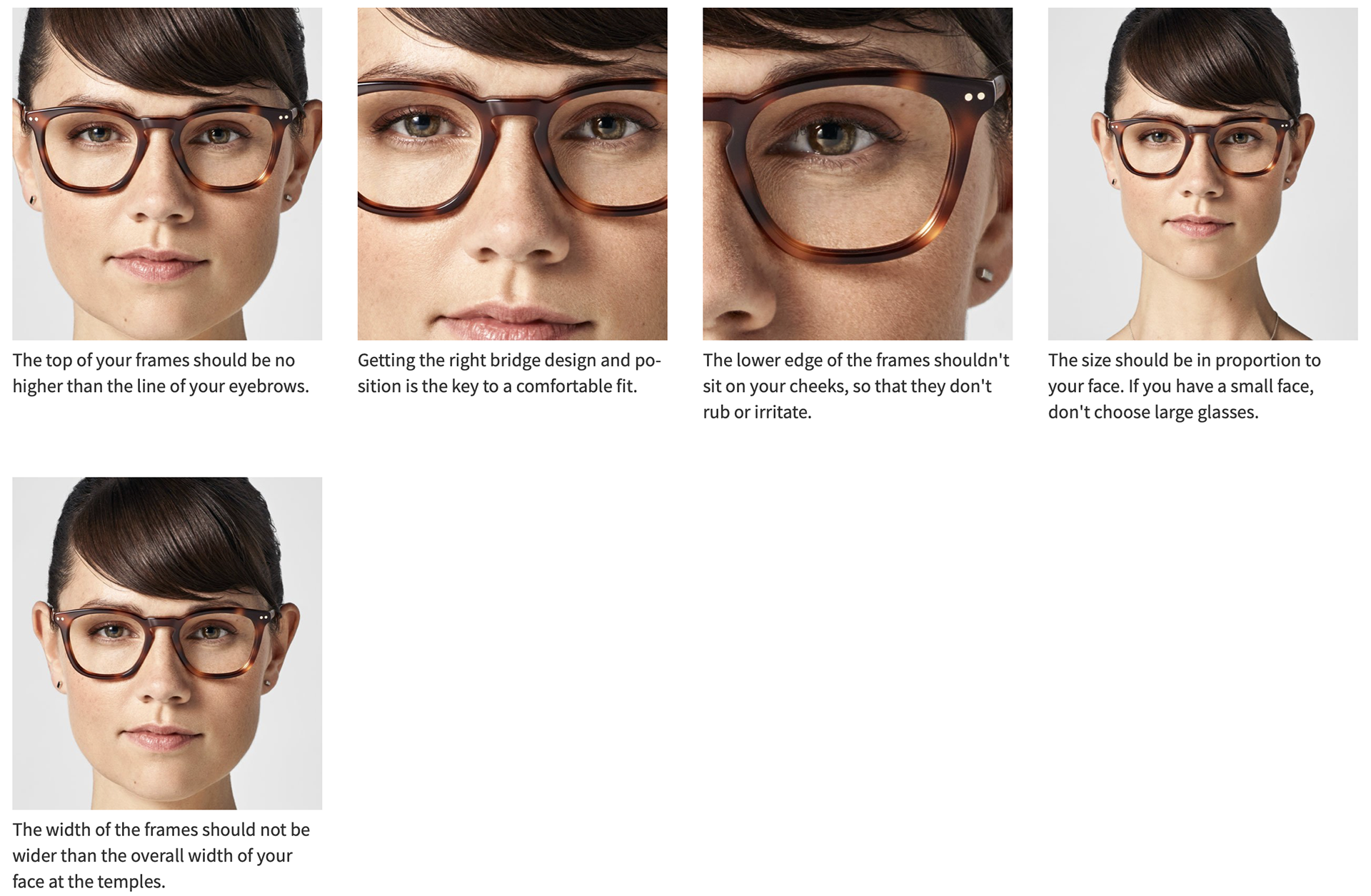Calipers, scales, reading glasses, jeweler's saw and popsicle sticks for prototyping and trials

Eyeglass fit is best characterized by the ear-to-temple distance, also called preaurale to sellion distance, interpupillary distance, temple breadth, noise bridge width, and head-breadth at the ears. These landmarks are associated with the arm length of the glasses, the location of the lense centers, the width of the frames, the width of the noise bridge, and the width of the glasses arms respectively.

Considerations for comfortable placement of glasses on one's face
+ Landmark selection
Landmark selection for the temple-tip width at the ears (distance between the left & right preaurale landmarks) and the lens center reference points (interpupillary distance).
Univariate quantile ranges associated with the desired multivariate accommodation target (middle 95% of the user population).

Preliminary sizing scheme for frame width and temple-tip length.
Preliminary sizing chart based on the scheme
Results from functional and standard anthropometry are very close, hence proving the sizing derived works
+ Satisficing
+ Crude measurements
+ Showroom vs Long term comfort
Nose-bridge-width sizing optimization, using logistic regression. The orange curve represents the probability that the wearer will judge the nose-bridge-width to be too wide and the purple curve represents the probability that the wearer will judge the nose-bridge-width to be too narrow. The solid black curve is the optimization function, representing the probability that the fit will be judged as “just right” by respondents.
Final nose-bridge-width sizing, which exploits the two distinct modes presented for the male and female demographics.



